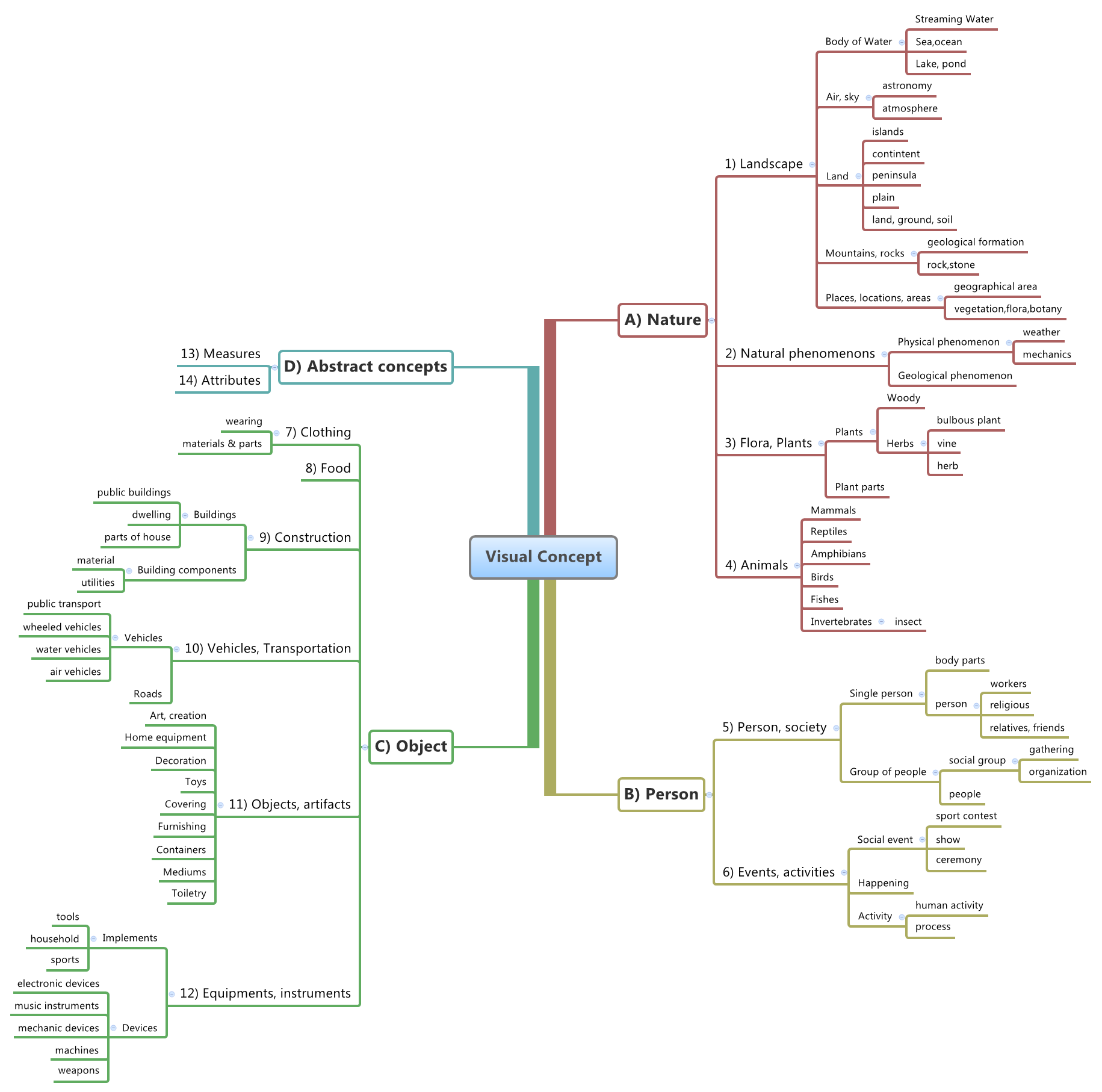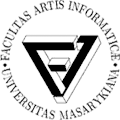The Visual Concept Ontology (VCO) is a domain-specific ontology developed for the purpose of image content description. It organizes frequent visual concepts into a hierarchical structure and maintains semantic links between them. Individual concepts are not defined formally in the VCO, but are specified by links to related objects in the WordNet lexical database. The VCO taxonomy simplifies and flattens the WordNet hierarchy, removing concepts not relevant for the visual domain and adding semantical connections between interrelated WordNet subtrees. At the moment, VCO only covers nouns from the WordNet structure, as these are most frequently used in image descriptions and have the strongest support in the WordNet.
The ontology covers 14 fundamental groups of concepts that appear in general-purpose images: landscapes, natural phenomenons, flora, animals, people, events, clothing, food, contructions, vehicles, objects, equipment, measures, and attributes. Each of these concepts represents the root of a separate sub-tree of more detailed categories. To choose suitable concepts for populating the taxonomy, we utilized a combination of top-down and bottom-up approach to WordNet processing.
The VCO is published using the Web Ontology Language OWL, a state-of-the-art formalism in knowledge representation. Individual VCO concepts are represented by OWL classes, related WordNet synsets are modeled as OWL individuals.




